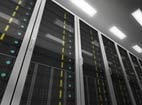Ever since going private, Dell has been making a concerted effort to deliver products and services that are much closer to emerging than established.
Today at the Dell User Forum 2014 conference, the company unveiled a series of appliances optimized to run the Hadoop distribution from Cloudera and databases from Oracle, Microsoft and SAP, while at the same time revealing agreements with Fusion-io and Nutanix, under which Dell will resell server-side Flash storage and integrated IT management software to be installed on a new class of Dell appliances, respectively.
In addition, Dell unveiled a Dell Storage SC4000 Series Flash array that provides up to 400TB of capacity at price points that Dell says are 72 percent less than rivals.
Sam Greenblatt, CTO for Dell Enterprise Solutions Group, says across the board Dell is looking to establish a customer presence at a much earlier stage of the technology adoption curve. While Dell was once content to wait until technologies had matured to the point of becoming a commodity, Greenblatt says Dell is looking to create a strong customer base among early adopters.
The Dell PowerEdge 720XD and 920 series appliances, for example, are designed to run Hadoop in-memory on symmetrical multiprocessing machines that create a common pool of compute resources to dramatically improve Hadoop performance, says Greenblatt.
The Dell Acceleration Appliances for Databases, meanwhile, are designed to run Oracle RDBMS and MySQL databases, SAP ASE and HANA databases and Microsoft SQL using Flash memory cards and solid-state drives (SSDs) to, on average, double the number of transactions per second each database would achieve using magnetic storage.
The Nutanix servers, meanwhile, will show up in the form of a Dell XC series of appliances that are optimized for Web applications.
Taken together, Dell is looking to turn the deployment of emerging technologies into more of a turnkey appliance experience that will make them available to large and midmarket enterprise customers alike.
It may take a while for IT organizations to think of Dell as a source of IT innovation. But as of 2014, it’s clear that Dell is trying to change how it’s perceived across the enterprise.



